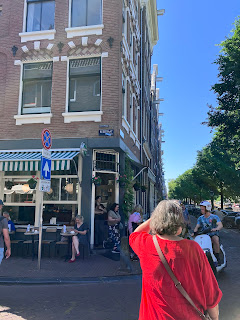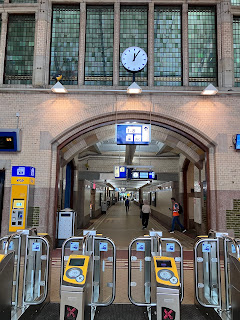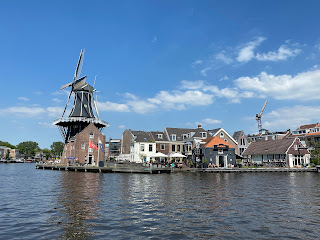June 28th. Fine, blue sky but slightly windy so much cooler
Today we went for brunch and spent the rest of the time packing suitcases.
I’d heard that the rubbish collections are automated, in that the receptacles are in a weight system and the computer tells the HQ when it is time to empty. Today I saw this one being emptied but wasn’t quick enough to take a photo.
The truck with a large crane on the back grabs the top of the “steeple” and lifts the receptacle clean out of the ground places it over the truck and then voila ! the rubbish is deposited in the dump truck. Back goes the receptacle on its spring loaded weighing platform, all set for the next time.
Near where we had brunch we saw one out of the ground as the controls were being repaired. There are different colour codes on the front for refuse, recycle, cardboard and textiles. Seems like an efficient system.
The packing has gone well and I’m impressed that everything still fits well into the case although I suspect it will be some kilos heavier than the 17.5kg with which I left New Zealand. In making the NZ Immigration online declaration I made certain to tick the confectionery box but be assured it does not contain these “lollies” which are cannabis and widely available over Amsterdam.
So in an hour or so we will leave for the airport and begin the homeward leg bringing this Epic Adventure to a close.




































































